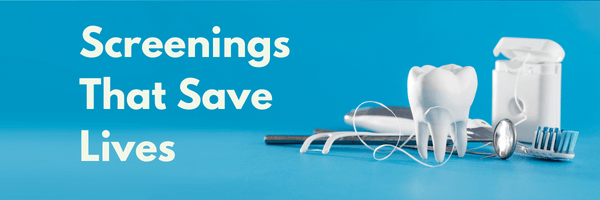
The Top 4 Benefits For Dental Employees
Posted September 09, 2022
“Company-sponsored,” “employer-sponsored,” or “employer-provided” – whatever you wish to call them, staff benefits are proving to be more than essential for dental employers looking to attract new hires and retain existing dental staff in 2022.
If we drill down further, health-related benefits, retirement saving contributions, and employee leave perks are dental job seekers’ most sought-after benefits. As a dental employer, it may be time to reevaluate your staff benefits packages to see where you can improve your offerings to give yourself a competitive hiring edge.
1. Get a Handle on Health-Related Employee Benefits
According to an America’s Health Insurance Plans (AHIP) survey, 75% of survey respondents felt that their employer-provided health insurance was critical for maintaining their health and financial security during the COVID-19 pandemic.
As group health plans aren’t mandated by law, and health insurance isn’t cheap, many dental employers may (understandably) feel tempted to exclude health benefits from their dental staff recruitment or retention strategies due to costs.
Employer-sponsored health coverage is so crucial to employees that it is a deciding factor in whether or not they accept a new job offer or choose to stay at their current job. Dental leaders should weigh the pros and cons of offering their staff health benefits before excluding them from their list.
For one, employers can enjoy significant tax deductions for contributions toward a team member’s health insurance premiums; any amount an employer contributes is exempt from federal income and payroll taxes.
The IRS’ Affordable Care Act also helps small businesses (those with fewer than 25 full-time employees) offset staff healthcare coverage costs with healthcare tax credits. However, it’s essential to read the fine print as it appears you must pay at least 50% of each employee’s single-coverage health insurance premium to qualify for tax credits.
Health Insurance Options
The health savings benefit options for your dental practice include Health Savings Accounts and Flexible Spending Accounts.
Health Savings Accounts (HSA)
Health Savings Accounts (HSAs) are a popular option that facilitates employer contributions toward their employees’ health insurance. Employers can set HSAs up with a bank, insurance company, or any IRS-approved trustee, so their employees can use them to set aside pre-tax money to pay for approved healthcare expenses.
What you need to know about HSAs
- Typically, employers deduct employees’ HSA contributions from their gross salaries.
- Both the employee and employer can contribute to an HSA, and any interest or earnings in the HSA account are tax-free.
- These contributions are also portable, meaning they stay with employees if they change or leave the workforce.
Flexible Spending Accounts (FSAs)
Flexible Spending Accounts or Arrangements (FSAs) are similar to HSAs in that they are employer-established benefits that employers can offer as part of a cafeteria plan (more on this later). In addition, all salary reduction contributions to an FSA are tax-exempt.
What you need to know about FSAs
- Employers select an amount they will contribute from their salary at the beginning of a plan year, which they can use to pay for qualified medical expenses during that year.
- Employers pay these expenses out of pocket and are reimbursed by the FSA.
- An employer and an employee can make tax-free contributions to an FSA, but the IRS caps annual contributions, so bear this in mind.
2. Researching New Retirement Savings Options
An HR.com State of Employee Well-Being 2022 survey report listed “saving for retirement” as one of employees’ top three sources of financial stress.
Considering that only 36% of US adults feel their retirement planning is on track, and a quarter of US adults have no retirement savings, it’s no wonder employees are anxious about their financial futures.
According to the American Academy of Actuaries, despite potential business tax savings, small business owners have historically shied away from offering their staff retirement savings and planning benefits because of the costs of maintaining such a plan, potential liability exposure, and compliance and administrative burdens.
In response to these challenges, the Setting Every Community Up for Retirement Enhancement (SECURE) Act was passed in December 2019, enabling the development of new retirement benefit options that make it easier for small business owners to help their employees save for the future. One such plan is the Pooled Employer Plan (PEP).
What is a Pooled Employer Plan?
A PEP is a 401(k) retirement plan that allows unrelated employers of any size to participate in one defined contribution (DC) retirement plan managed by a registered pooled plan provider (PPP).
According to PwC, instruments like PEPs can help small to medium-sized companies access retirement products that are less expensive than single-employer DC plans. Dedicated Dental 401(k) PEP plans already exist to facilitate dental employers and their staff save for their financial futures.
What is a SIMPLE IRA?
A Savings Incentive Match Plan for Employees of Small Employers (or a SIMPLE IRA) is another staff retirement savings option for dental employers to consider. Simple IRAs allow both employers and employees to contribute.
What you need to know about SIMPLE IRAs
- Any retirement plan employer or financial institution can maintain a SIMPLE IRA.
- Typically, employers choose a SIMPLE IRA plan that allows staff members to select the financial institution to receive their contributions or a SIMPLE IRA plan where the employer makes this choice, and their staff has no say.
- As with a flexible spending health savings account, a legal limit exists on how much of their annual salary a team member can contribute to a SIMPLE IRA.
- The good news is that SIMPLE IRAs have a higher contribution limit than traditional IRAs. Employees 50 years or older can make catch-up contributions over and above the legal limit.
What is a Simplified Employee Pension (SEP)?
A Simplified Employee Pension (SEP) differs from a SIMPLE IRA in that it only allows employers to contribute directly to the retirement plan.
What you need to know about SEP-IRAs
- Employers can use a SEP-IRA to set aside retirement savings for themselves and their employees; however, they do not need to make annual contributions.
- All contributions to a SEP-IRA are tax-deductible, and all earnings on investments are not taxed.
- Employers (and not employees) decide how much to contribute to their staff’s SEP-IRAs
- Savings contributions can be up to $61,000 or 25% of an employee’s salary (whichever is less).
3. Looking Into Important Staff Leave Benefits
Employees value benefits that improve their work-life balance. According to the American Psychology Association’s (APA’s) 2022 Work and Well-Being Survey, offering flexible work hours and cultivating a workplace culture that respects time off is key to supporting employees’ mental health and well-being.
“Time off” would include paid sick leave, vacation days or holidays, and family-responsibility leave like paid or unpaid maternity or paternity leave.
Paid/Unpaid Family Responsibility Leave Concerns
The American Psychological Association highlights that many Americans cannot afford to take unpaid leave to attend to family responsibilities. In addition, despite ranking as the third-most important benefit, a 2022 Employee Benefits Survey report noted that leave benefits for parents wanting to take paid maternity or paternity leave, for example, have declined to pre-COVID levels after rising to the highest recorded levels during 2020.
Only ten states and the District of Columbia have paid family and medical leave programs to cater to family responsibility leave. Moreover, the Family and Medical Leave Act (FMLA) only allows certain employees working in companies of 50 staff members or more to take up to 12 weeks of unpaid, job-protected leave per year for maternity, paternity, adoption, or foster care leave. In short, the FMLA doesn’t require smaller dental practices (below 50 employees) to offer their staff unpaid leave for attending to family obligations, like maternity.
Plans to Build Back Better Might Be on the Way
In response to the above, President Biden’s Build Back Better Act, currently stalled in Senate, aims to provide all US employees with up to four weeks of paid caregiving leave. To qualify, employees must still meet a minimum threshold of earned wages. If enacted, the proposed paid family leave program should take some financial pressure off employees needing to take time off to care for family members.
In the meantime, openly discussing the paid leave benefits that are most important to your dental practice staff may help you curate a realistic benefits package that is also enticing enough for them to feel supported in achieving work-life balance.
4. Not Forgetting Flexible Benefits Plans
One way to cater to a range of employee needs is to offer them a Flexible Benefits Plan. Also known as “cafeteria benefits,” this plan type is structured to provide employees with increased flexibility and choice regarding their benefits coverage.
Under a cafeteria benefits (or IRC section 125) plan, enrolled employees agree to contribute a portion of their salaries to a benefits plan on a pre-tax basis. Staff members can then use their “benefit credits” (deducted from salaries or wages before tax) to pick and choose preferred perks from a list of qualified benefit options, including life insurance, medical care, or dental care.
Employees who choose not to spend their benefit credits can cash them out as a taxable benefit, deposit their credits into a retirement plan, or pay for dependant care services or programs, such as child daycare, preschool, or after-school programs.
A Mckinsey report highlighted that one of the top challenges facing US working parents (and women especially) is finding quality and affordable childcare. When considering job offers, working mothers with children aged five and under are looking for more flexible work arrangements or assistance with childcare expenses.
Benefit credits towards dental employees’ childcare-related needs can therefore go a long way in improving retention rates and helping attract new hires.
Sign up With DentalPost
DentalPost is the nation’s largest job board for dental professionals. We keep our fingers on the pulse of industry salary data and recruitment trends to empower dental job seekers and employers with the information they need to make informed decisions.
Find a better fit faster with extensive job seeker candidate data and assessments DentalPost’s online job board. Register an Employer account with us today!
We connect and educate more than 900,000 job seekers in the U.S. and Canada to build better places to work through teams that excel.



.png)




.png)
